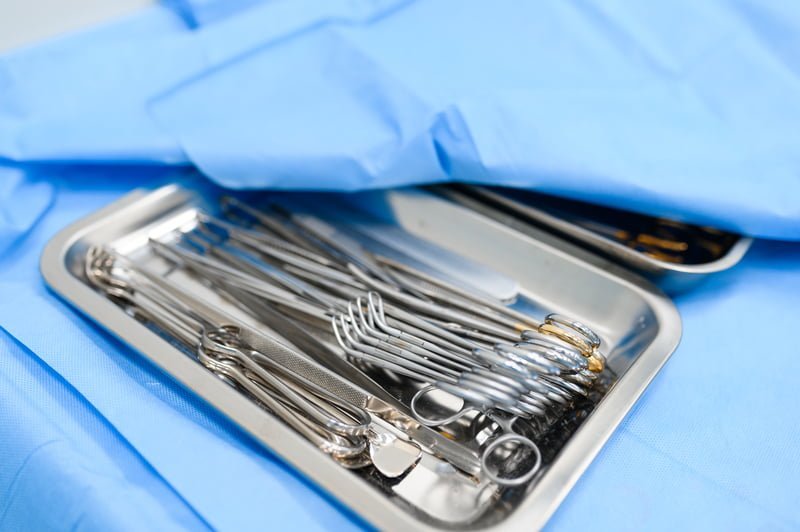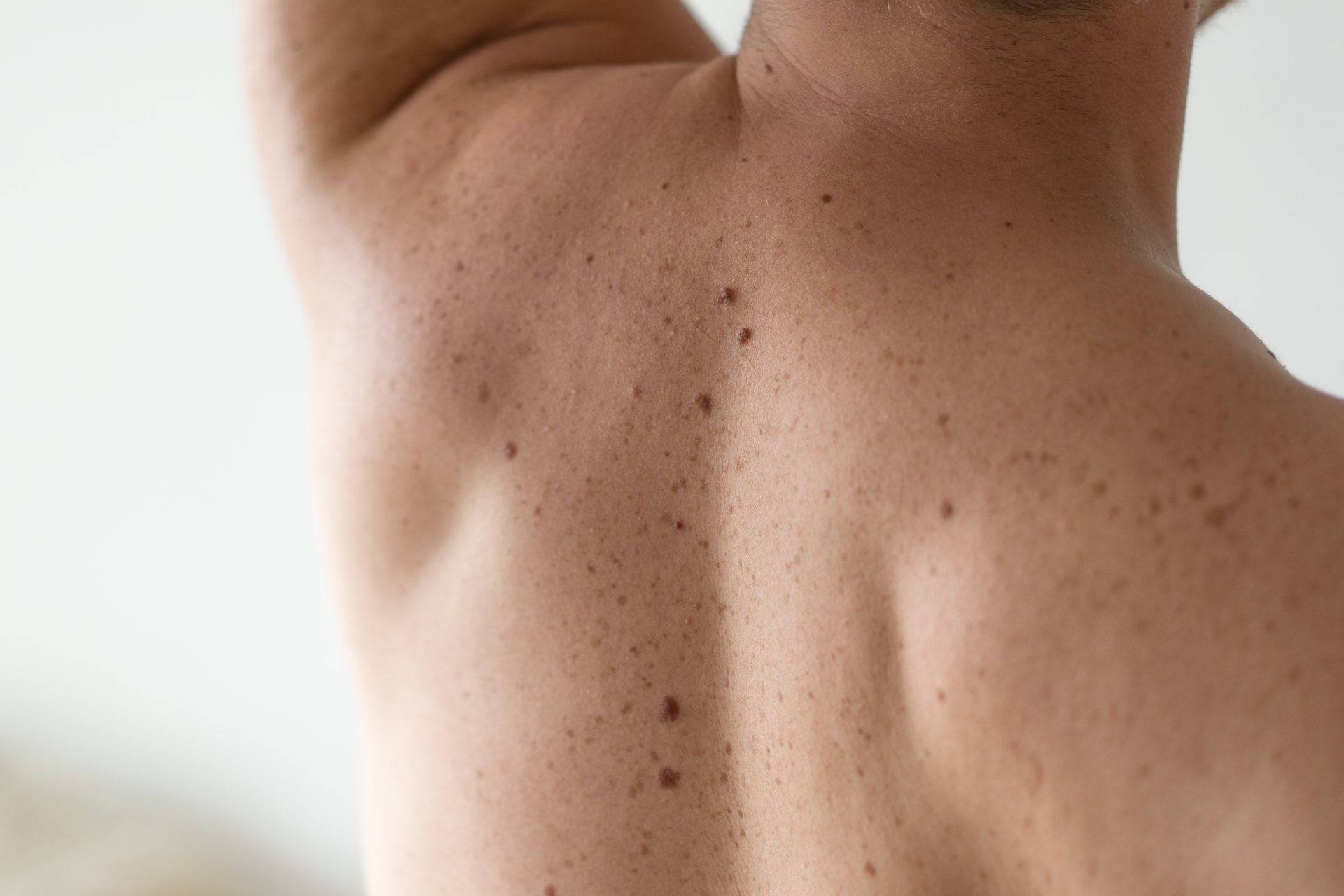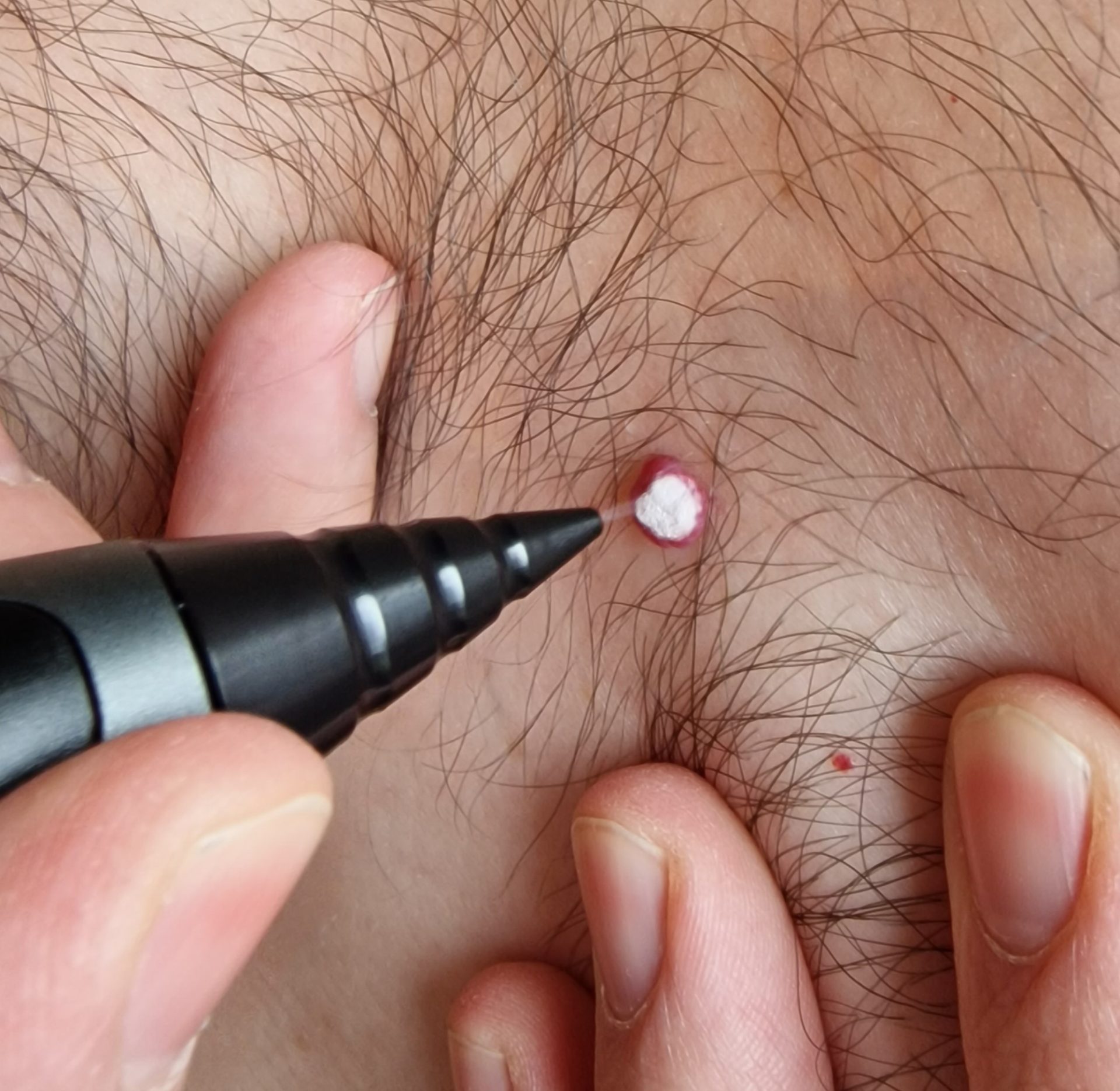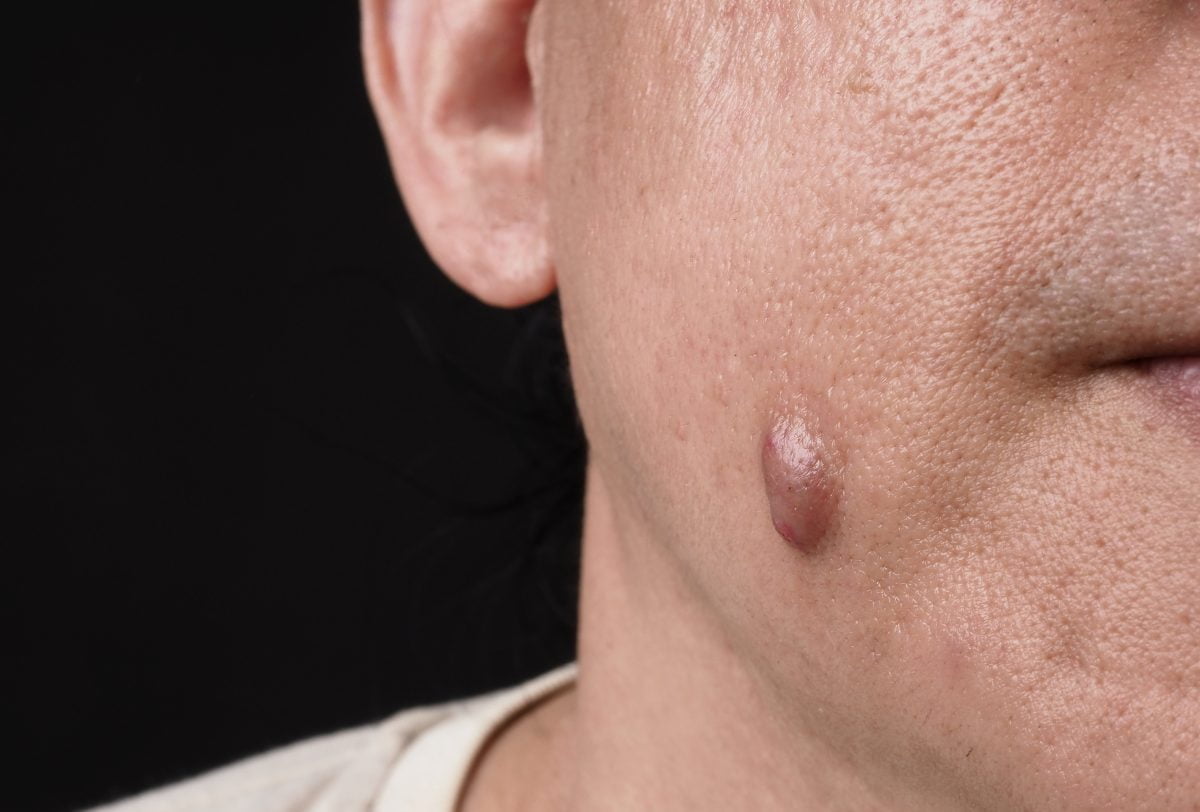Cryotherapy & Minor Surgery
At RPM Health Clinic in Leicestershire, we assess moles and skin lesions with dermoscope to rule out malignancy and ensure safe removal. If removed, they are sent for histopathology for confirmation of origin.

Moles and benign skin lesions removal
Treatment or removal of benign skin problems (sometimes called skin lesions) is usually simple and painless, and often takes just minutes.
As well as receiving first-class treatment at RPM Health Clinic, you’ll also benefit from personalised care that puts your wellbeing at the heart of your experience with us.
Contact us today to find out more about our range of surgical procedures for benign skin problems and start your five-star treatment journey.


Depending on your skin problem, you may be recommended one or more of the following treatments:
Freezing (cryotherapy), that uses liquid nitrogen to freeze and kill off your lesion. (Book Now)
Hyfrecator treatment (electrocautery), that involves the tip of a probe which is heated up by an electric current and used to burn off a skin lesion. (Book Now)
Scooping away (curettage), where your clinician uses spoon-shaped surgical instrument to gently scoop away your lesion. (Book Now)
Partial removal (shave biopsy), with cuts across the base of your lesion so it’s level with your surrounding skin. (Book Now)
Complete excision (excision biopsy), where the whole skin lesion is cut out and removed. (Book Now)
Price list
0. Minor Surgery Initial Consultation in Person Inc Dermoscopy
Personalized consultation to discuss minor surgical needs, including dermoscopic evaluation and expert recommendations for treatment. This fee will be waived if the procedure costs over £200 and is performed during the same appointment.
Cryotherapy of small benign lesion (up to 3 lesions)
Effective treatment for small benign lesions using cryotherapy, ensuring minimal discomfort and excellent cosmetic outcomes. Each additional lesion after 3 costs £25.
Removal of Benign Lesion by Electrocautery
Quick and precise removal of benign skin lesions using electrocautery, providing excellent cosmetic results. Each additional lesion costs £30.
Non Cancerous Skin Lesion removal (Shave/curettage)
Advanced removal technique for non-cancerous lesions, tailored to minimize scarring and improve skin appearance. Each additional lesion in the same appointment costs £50.
Single Skin Tag removal by electrocautery
Fast and effective removal of a single skin tag using electrocautery, ensuring minimal downtime and a smooth cosmetic outcome
Skin Tag Removal - Electrocautery (up to 5)
Abscess Incision and draining
Quick and effective draining of infected abscess, cyst. First follow – up consultation included. Any further appointment for wound care will be charged £100 per session.
Skin Cyst Excision - On Body
Expert surgical removal of skin cysts, minimizing scarring and ensuring complete excision for long-term results.
Price list
Surgical excision of small skin cyst
Effective surgical removal of small cysts, ensuring patient comfort and optimal outcomes.
Surgical Excision of Scalp Cyst
Specialized excision of scalp cysts, focusing on complete removal and minimal disruption to surrounding tissues.
Surgical excision Lipoma - Small
Expert removal of smaller lipomas with a focus on cosmetic outcomes and patient comfort.
Surgical excision Lipoma - Large
Surgical removal of large lipomas, ensuring complete excision and minimal scarring.
Subcision treatment for acne scars small area 2x2 cm
Specialized treatment for acne scars, using advanced subcision techniques to improve skin texture and appearance.
Steroid injection into scar or acne cysts (per session)
Precise steroid injection to reduce inflammation and improve the appearance of scars or acne cysts. First treatment requires an initial consultation (90 + 140 = £230). Further sessions are priced as per the procedure if within an agreed treatment plan.
Surgical excision of Mole/ Skin Lesion
Surgical excision of suspicious or problematic skin lesions, performed with precision to minimize scarring and ensure excellent cosmetic results. Price will be discussed during initial consultation.
Histopathology cost per sample
Comprehensive histopathological analysis of tissue samples for accurate diagnosis and treatment planning.
Cryotherapy
What is cryotherapy?
We are use innovative technology called FREEZPEN, which allow us to use a very fine freezing jet to target only problem areas, exposing them to sub-zero temperatures to remove or reduce the lesion, without damaging the surrounding healthy tissue. The treatment is fast and effective.
What types of lesion can be treated with cryotherapy?
Cryotherapy can be used for:
Intradermal lesions
Skin tags
Age spots
Cherry angioma spots
Milia
Seborrheic keratosis/ warts
Warts and Verrucae
Solar keratosis
Dermatofibroma
Pyogenic granuloma
Sebaceous hyperplasia
What to expect with cryotherapy?
How long does it take to see results?
How should the treated area be cared for?
Will I need more then one treatment session?
We are NOT able to provide any complementary treatments.
Does cryotherapy hurt?
You may feel some discomfort following treatment for several hours which is expected and desired as it means treatment has take effect.

Cryotherapy & Minor surgery Videos
See videos of real patients and minor surgery and cryotherapy intervention for treatment of precancerous and superficial cancerous lesions and also skin tag removal.
WARNING : Contains the sight of blood and needles
Hyfrecator treatment
What is Hyfrecator treatment?
A small electrosurgical needle is used under local anaesthesia which will leave a clean wound that will heal quickly.
Hyfrecator is very similar to laser treatment in how it treats the lesions. The hyfrecator technology destroy unwanted tissue in a controlled and precise way.
The tip of the treating probe remains at room temperature, however the heat is generated by tissue resistance to the passage of high frequency electricity. Furthermore, it is an extremely targeted procedure and thus does not affect or burn the surrounding normal tissue.
What is the difference between hyfrecator and cryotherapy treatment?
What lesion can be treated with Hyfrecator?
· Skin Tags
· Milia
· Cherry Angiomas
· Sebaceous Hyperplasia
· Seborrheic Keratosis
· Broken blood vessels
· Fibromas
How should the treated area be care for?
Immediately following the procedure, an antibiotic ointment or white pertolatum is applied to the area, which is then covered with a dressing.
The patient is given instructions that they must follow at home in order to take care of the wound. These include the following:
Keep the area dry by not washing it for 24 to 48 hours, to enable the healing process to begin
After this time, gentle soap and water can be used to cleanse the area
Vaseline can be applied twice daily to any areas on the face and scalp and once daily to other parts of the body
A plaster with antibiotic ointment or white petrolatum may be applied daily, but this is not usually necessary
Once the scab has healed, wear clothing that protects the skin from the sun and a sunscreen with a SPF of at least 30
Depending on the size, location, and how deep the lesion penetrated, it may take up to three weeks for it to heal.
You can watch video of three benign lesions
treated with Hyfrecator after shave excision
Warning : contains the sight of blood & needles
Lipoma removal
What is Lipoma?
Lipomas can occur on any area of skin where there are fat cells. They are usually seen on the shoulders, neck, chest, arms and back. Their range can be from the size of a pea to very large sizes and they usually grow slowly. The largest Lipoma Dr Kittel has ever seen was the size of a child’s head.
About one in 100 people develop a Lipoma, so they are fairly common. Patients often have one or 2, sometimes many more. Few patients have a larger number, because they may have an inherited condition called familial Lipomatosis.
How is a Lipoma removed?
Lipoma removal surgery is usually straightforward because Lipomas are fatty lumps that are often sitting just under the skin. Some Lipomas can prove more challenging because they large or located deeper.
Local anaesthesia will be administered to ensure pain free procedure.

Skin cyst removal
Epidermoid cyst on the body
Epidermoid cysts, sometimes wrongly called sebaceous cysts, are benign lesions commonly found on the neck, back, chest and shoulders. They may contain liquid or semi-liquid material made from skin keratin, known as a key element that is responsible for skin, nails.
Pilar cyst from scalp
This benign growth can develop in 10% of population growing from hair follicles. Some people have a genetic predisposition to getting them. They present clinically with smooth, fleshy coloured lumps to the scalp, face or neck.
Our skin is constantly producing new skin cells and getting rid of old ones. Typically, old skin cells stop multiplying and fall off our skin’s surface. However, they can get trapped under your skin’s epidermis, or top layer, where they keep on multiplying. At the same time, your scalp is creating keratin, a protein that makes skin, hair and nail cells. These old skin cells and new keratin cells combine to create layer after layer of cells. Over time, and many layers later they create pilar cysts. These cysts push up your outer skin, which is when is becoming noticeable.
Treatment
If it doesn’t cause discomfort or cosmetic problems, it can be left alone with no treatment. However, if you for any reason would like to have it removed do not hesitate to book for your initial assessment and consultation to discuss your options.
If a cyst is inflamed or infected, initial treatment with antibiotics and delay of surgery is more appropriate. Although, if necessary, incision and drainage can be performed, the complete cyst capsule removed. Follow up surgery will be necessary otherwise the cyst will return.
This minor surgery is done under local anaesthesia. We will do our best to minimise it, but there will be an appropriate size/ length of scar left where excision was made, which if no complications occur will fade to some level over the time.

